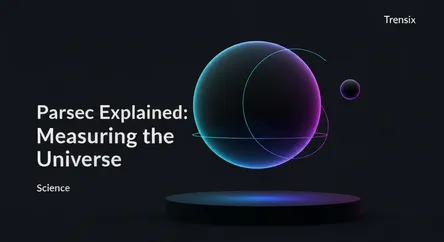Science
Parsec Explained: Measuring the Universe

Discover the parsec, the unit astronomers use to measure vast cosmic distances. Learn how it compares to a light-year and why it's so important.
What is it?
A parsec is a unit of length used to measure the enormous distances to astronomical objects outside our Solar System. The name is a blend of 'parallax' and 'arcsecond.' One parsec is the distance at which one astronomical unit (the average distance from the Earth to the Sun) subtends an angle of one arcsecond. This equates to approximately 3.26 light-years, or about 30.9 trillion kilometers (19.2 trillion miles). Astronomers often prefer using parsecs over light-years because it is derived directly from observational data—specifically, stellar parallax, the apparent shift of a star's position as viewed from Earth at different points in its orbit.
Why is it trending?
The term frequently appears in science fiction, most famously in 'Star Wars,' which sparks public curiosity. However, its relevance in science is constantly renewed by missions like the Gaia space observatory and the James Webb Space Telescope. These instruments measure the positions and distances of stars with unprecedented accuracy, and their findings are reported in parsecs. As we discover more exoplanets and map the Milky Way in greater detail, the parsec remains the professional standard, keeping it relevant in scientific news and discussions.
How does it affect people?
While a parsec has no direct impact on daily life, it is fundamental to our understanding of the universe's scale. It allows scientists to create 3D maps of our galaxy, comprehend cosmic structures, and calculate the age and expansion of the universe. This knowledge profoundly shapes our collective perspective, placing humanity in a vast and wondrous cosmos. For enthusiasts and students, grasping the concept of a parsec is a gateway to appreciating the true immensity of space and the incredible science used to explore it, inspiring future generations of explorers and scientists.